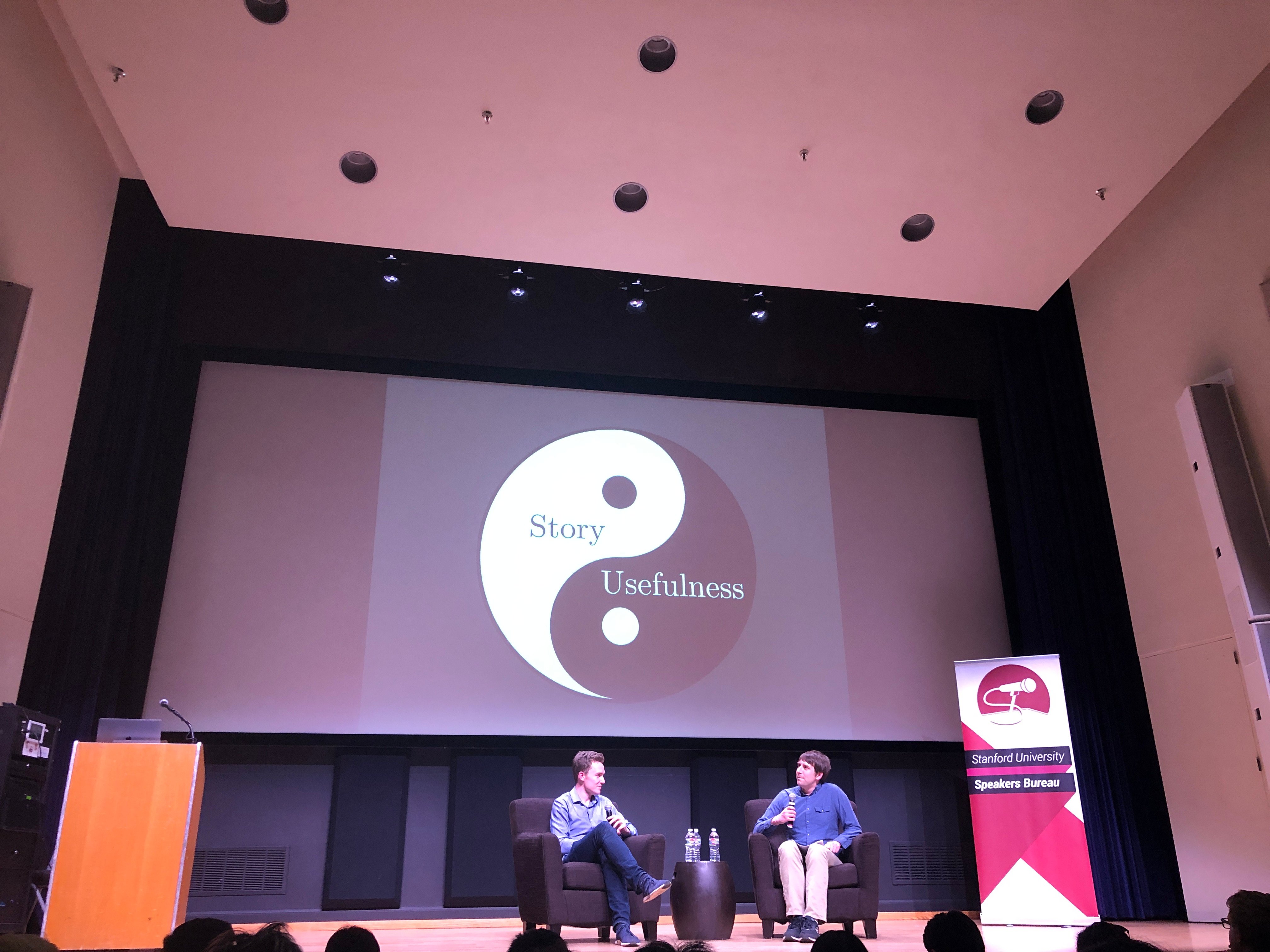When students learn math, they often wonder, “When will I ever use this?” Grant Sanderson ’15, creator of the popular YouTube channel 3Blue1Brown, offers a new perspective on engaging with math: instead of prioritizing usefulness, he emphasizes emotion, wonder and imagination — similar to how one would engage with fiction works like Harry Potter.
In a sold-out talk at Cubberley Auditorium on Wednesday night, hosted by the Stanford Speakers Bureau, Sanderson shared his experiences of using visuals and stories to make even the most challenging math concepts engaging and accessible.
“When people engage with fiction, no one ever asks, ‘When am I going to use this?’” Sanderson said. “The same thing fiction can do for people, so can math. There’s wonder and mystery — and once there’s a story, you can go behind the mechanics.”
Sanderson’s channel 3Blue1Brown — named after the proportion of colors in his right eye — currently has 2.4 million subscribers, and has been featured on other prominent STEM-education YouTube channels such as Numberphile. He explains concepts ranging from linear algebra to neural networks with a highly visual approach, using a custom software library called manim, to make visuals.
His most popular video, “The hardest problem on the hardest test,” explains a solution to a problem from the 1992 Putnam Competition, an international math contest for college undergraduates. The problem involves finding the probability that a tetrahedron — a shape like a pyramid — contained in a sphere holds the center of the sphere. With storytelling and a visual approach, Sanderson strives to show viewers that they have the capacity to find the solution on their own.
“When we put the visuals first, then start to articulate the meaning, you can get a sense of ownership over it,” Sanderson said.
“I want people to see that whatever your background is, you are not different from the top student,” he later added.
Like in fiction, storytelling in math involves developing characters and building relationships, according to Sanderson. His characters often involve cartoons of the mathematical constant “pi” or the geometric figures involved in a problem. In one video, he demystifies a complex geometry problem involving inscribed rectangles by explaining the concept of a “climax” — when two different concepts combine to form a solution — as analogous to a kiss in a fairytale.
He also said that though pure mathematicians rarely focus on the “usefulness” of math, the problems they consider often have practical applications outside their field. One of Sanderson’s most popular videos is about a puzzle involving colliding blocks; a professor at a conference told Sanderson that the solution in the video was identical to one with applications for quantum computing.
“We are not coming from a motivation of usefulness,” Sanderson emphasized. “We’re coming from story and intrinsic delight. But even when you try not to make math useful, it has a way of coming back at you.”
Following Sanderson’s talk, computer science (CS) lecturer Keith Schwarz M.A. ’11 moderated a question and answer session with questions from the audience.
Sanderson talked about how his undergraduate experience at Stanford, taking classes in both the math and CS departments, influenced his teaching. Through CS courses — particularly the introductory 106 series — he observed the storytelling nature of CS, he said. He said he appreciated that students were taught how to build programs on their own, and he wanted to apply that creativity to math.
When asked about how to push through difficulties and frustrations in math, Sanderson admitted that “everyone” hits a difficult point.
“The people at the end who made it through weren’t the ones who had more intuition,” Sanderson said. “They were the ones who were flexible enough to try different ways of learning.”
Josh Gross ’23 and Sophia Jones ’23 were two of many students who attended that have found his videos helpful at Stanford, particularly his “essence of linear algebra” series, praising the depth of his videos.
“The majority of science YouTubers want to get your attention and keep it, often releasing a firehose of information,” Gross said. “But with Grant’s videos, he’s not afraid to make them more substantive and dense. With that comes the need to ‘pause and ponder,’ and the quality is so high that you’re willing to pause and enjoy it.”
“It was an amazing moment to see him because he made such an impact on my life,” said Jones, who noted Sanderson’s videos helped her in MATH 104. “It was a testament to the ‘nerd nation’ dynamic of Stanford because everyone was so excited to see him, and he was so excited to see us.”
Contact Patricia Wei at patwei ‘at’ stanford.edu.
